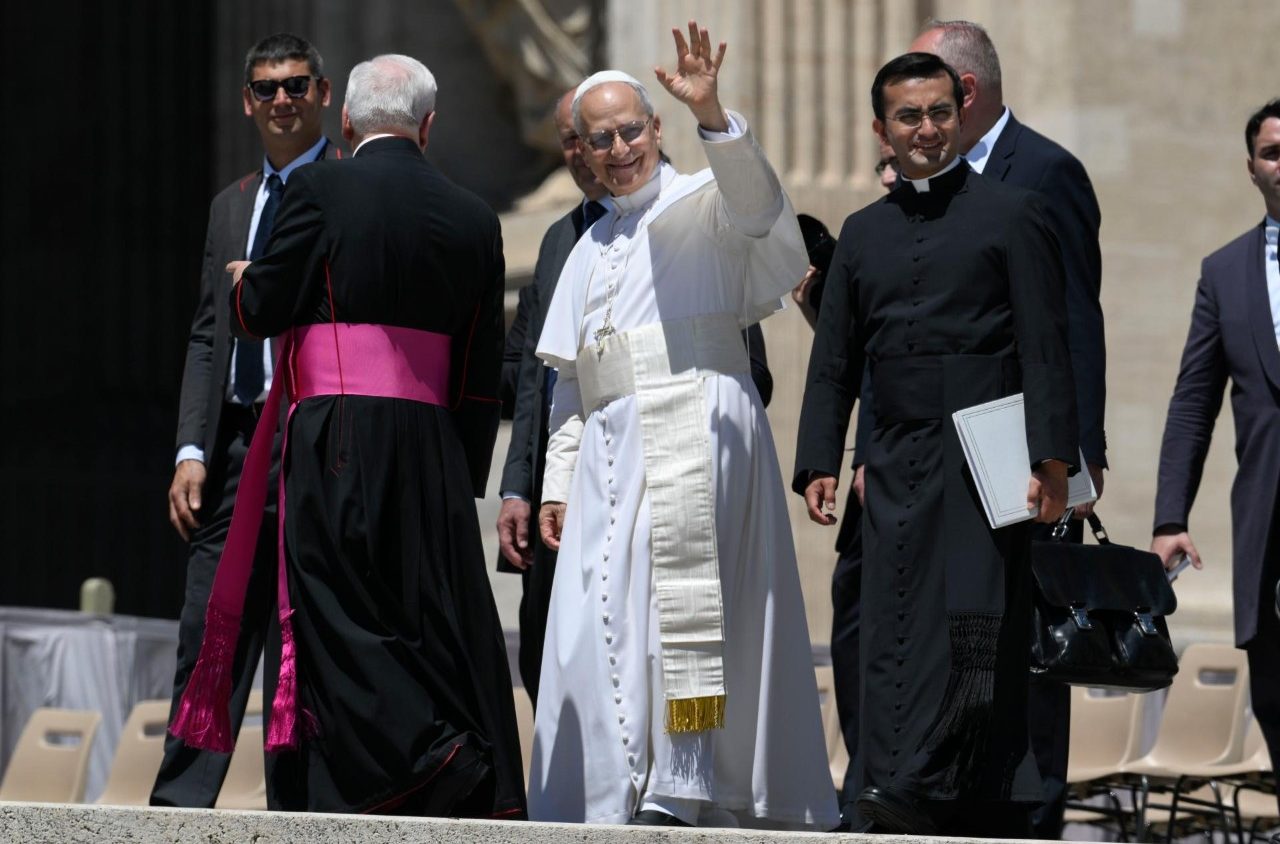🇮🇹 Versione italiana
Vatican City – This morning, Wednesday, May 28, yet another dark chapter unfolded in the relationship between truth and Vatican communication. During the general audience in St. Peter's Square, a deeply human and powerful gesture by Pope Leo XIV was obscured by the direction of the official Vatican media. As the Pope, having personally greeted all the bishops, began descending toward the faithful at the side to shake hands and bless them, Vatican News cut the live broadcast, leaving only a panoramic view of the square and interrupting the transmission of close-up footage.
It was an unscripted moment—yes—but one that spoke louder than a thousand speeches: a gesture embodying the spirit of a pontificate that unites closeness to the people of God with an awareness of his role as a leader. By walking among the faithful, Leo XIV demonstrated that one can be Pope without renouncing the papacy, that one can be loved without demonizing the Church. A narrative uncomfortable for those like Paolo Ruffini, Andrea Tornielli, Salvatore Cernuzio, and others, who for over a decade constructed a rigidly ideological narrative around the previous pontificate. Acknowledging the human and pastoral strength of Leo XIV would mean admitting that twelve years of official communication were often more propaganda than evangelization. It would mean admitting that tradition need not be dismantled to reach people's hearts.
That’s why they prefer to obscure. Every gesture that could bring Leo XIV closer to the people is erased. Every smile, every handshake, every unscripted word is cut, reduced, avoided. The goal is clear: to create as much discontinuity as possible with Pope Francis, and then accuse Leo XIV of coldness, distance, and restoration. A calculated strategy, fueled by those who today fear losing visibility, positions, and power. A strategy that earned them promotion in 2013, but that today will cost them a one-way ticket. After all, it’s no secret that many of these names thrived under one pontificate and now feel marginalized under another. For years, they have fueled polarization, rifts, and division within the Church. But this time, it won’t be so easy. The public—at least those present in the square—saw it. And those watching from home—despite the lack of official footage—know how to seek and find the truth.

A Censored Gesture
The “unscripted moment” was unplanned, and that made it all the more powerful: once the official part of the audience concluded, Leo XIV decided to move even closer to the people at the sides of the stage.
The Vatican media’s response? Live censorship. Zooming out, wide shots, fading away. Viewers were left with the impersonal image of a distant crowd. No emotion, no handshakes, no human contact was shown. A deliberate editorial choice—and sadly, now a recurring one.
This is not an isolated incident. Just yesterday, during the audience with Napoli Football Club, Vatican News—both the Italian version and others—cut out a controversial part of Leo XIV’s speech. Referring to the media, the Pope had stated: “Not everything the press says is true.” A direct, sincere remark that vanished instantly from the official versions distributed online and on social media. Edited videos, deleted words, erased memory.
Fortunately, truth cannot be silenced. Those present in St. Peter’s Square saw it, filmed it, and shared it. Images of the Pope shaking hands and giving blessings—despite the absence of official cameras—are already circulating online. And this says much about the failure of censorship: spontaneity, authenticity, and truth now escape centralized control. But the bitterness remains. The bitterness of seeing that where there should be service to the Pope, there is instead a power game that began just hours after the death of Jorge Mario Bergoglio.
S.R.
Silere non possum